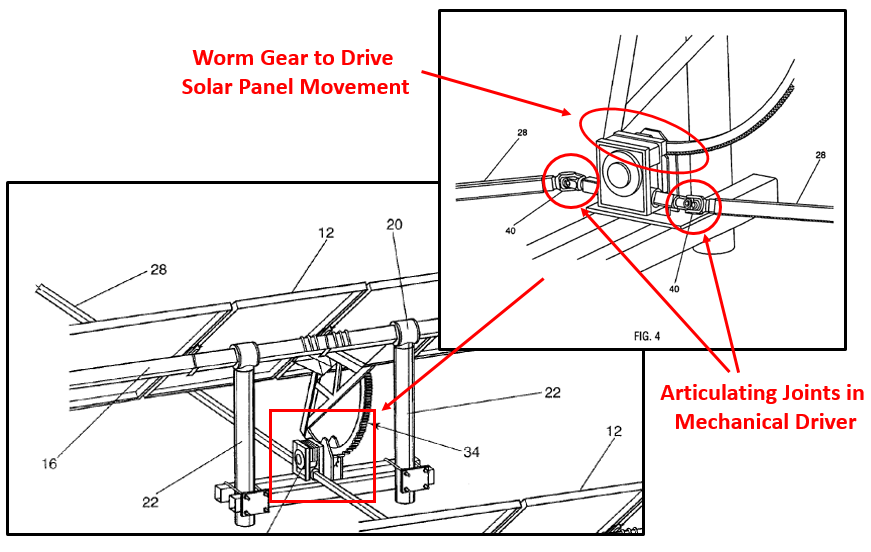- ArcelorMittal has challenged the validity of a solar tracking patent owned by Array Technologies in a petition filed with the Patent Trial and Appeal Board
- Array Technologies had previously brought infringement claims against a solar tracking company called Exosun. ArcelorMittal later bought assets from Exosun, which may have prompted ArcelorMittal’s challenge to the Array Technolgies patent.
International steel and manufacturing giant ArcelorMittal filed a petition in March at the Patent Trial and Appeal Board challenging the validity of a solar tracking patent owned by Array Technologies, Inc. If successful, ArcelorMittal’s challenge could result in the cancellation of a significant portion of Array Technologies’ U.S. Patent No. 8,459,249.
ArcelorMittal appears to be an unusual petitioner at the PTAB in that ArcelorMittal and Array Technologies do not appear to be directly engaged in litigation over the ‘249 Patent. The PTAB is a favored venue among patent defendants for attempting to invalidate a patent, and it is estimated that upwards of 85% of the disputes heard at the PTAB stem from litigation between the parties in federal courts. As explained below, in this case ArcelorMittal appears to be bringing the challenge to Array’s ‘249 Patent as a preemptive measure.
Array Technologies filed a lawsuit in August 2017 against Exosun Inc., a worldwide provider of solar tracking arrays, alleging infringement of the ‘249 Patent. In early 2018, while that lawsuit was ongoing, ArcelorMittal purchased assets from Exosun SAS (the French parent company of Exosun Inc.). ArcelorMittal then challenged the validity of the ‘249 Patent at the PTAB, possibly because the acquired assets were the same that are accused of infringement in the Exosun litigation. In bringing the challenge, ArcelorMittal may be able to invalidate the patent asserted by Array Technologies. ArcelorMittal may also use the challenge as leverage in any settlement or licensing negotiations with Array Technologies.
The ‘249 Patent is directed to solar tracking technology. Solar tracking arrays allow solar panels to follow the motion of the sun throughout the day, most commonly by moving the solar panels from an east-facing orientation early in the day to a west-facing orientation late in the day as shown in the below image:
The ‘249 Patent asserts a significant weakness in the solar tracking array shown above: when solar panels are subjected to windy conditions, the forces acting on the panels are essentially concentrated at the mechanical linkage circled in red. As a result, solar tracking arrays of the type shown above must be constructed with large, robust, and expensive mechanical linkages. The ‘249 Patent also notes that these arrays require strict alignment between rows of panels to ensure that the mechanical linkages are able to couple multiple rows together.
To overcome these weaknesses, the ‘249 Patent proposes coupling the array’s mechanical driver to each solar panel with a device called a worm gear. Worm gears are effective to drive the motion of the solar panel, but do not generally translate wind forces back to the mechanical driver. The ‘249 Patent also proposed the use of articulating joints between solar panels to compensate for non-aligning units. An annotated figure from the ‘249 Patent shows the worm gear and articulating joints:
Annotated Figure 1A (excerpt) and Figure 4 of the ‘249 Patent
In challenging the validity of the ‘249 Patent, ArcelorMittal has provided a number of documents to the PTAB that purport to show the use of worm gears and articulating joints with solar arrays before the time of the alleged invention claimed in the ‘249 Patent. (Reminder: if a claimed invention is not new and non-obvious over existing technology at the time the invention was made, then the invention cannot be patented). If ArcelorMittal is successful in arguing that the invention claimed in the ‘249 Patent is merely an obvious combination of previously known elements, then the challenged portions of the patent will be declared invalid and cancelled by the PTAB.

